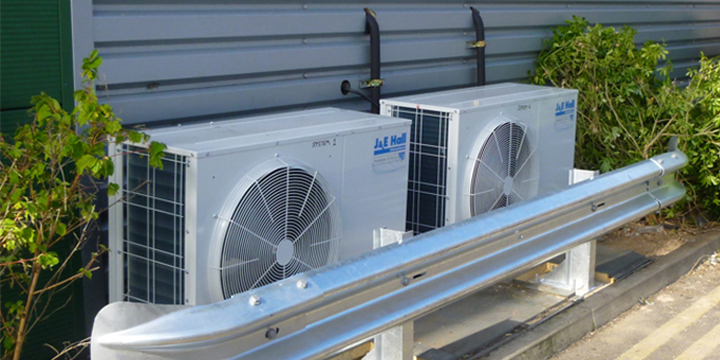Call us on : 0345 302 2920
Email us on : info@coldnet.co.uk
Call us on : 0345 302 2920
Email us on : info@coldnet.co.uk
 Large Cold Room
Large Cold Room Small Cold Room
Small Cold Room Breakdown Service
Breakdown Service Preventative Maintenance
Preventative Maintenance Air Conditioning
Air Conditioning Portfolio
Portfolio
Doors
Like for like replacements.
Sliding door tracks and fixtures.
Hinges, handles and misc. fittings.
Gaskets.
Door protection ( Overlays, 5 Bar Sheeting, Bollards and Goalposts )
Door Frames.
Door Heater cables, tapes and transformers.
View Products
Panelling
Scratch and Dent repairs
Panel Replacement
Panel protection (such as bump bars, sheet protection, kerbing)
Internal and External Trims
Seal repairs ( i.e. re-sealing panel joints etc. )
Flooring
Floor overlays
Thresholds
Internal Kerbing
Coldroom and Coldstore Extensions, Relocations and Disposals
Other items
Strip Curtains
Shelving
Pressure Relief ports
Windows
Access Hatches and Conveyor openings
After 1 January 2010 no more virgin refrigerant R22 can be used in existing systems.
After 2015 no more recycled refrigerant R22 can be used in existing systems.
Institute of Refrigeration Guidance Notes click to download
If you have recently installed an R22 air conditioning system the phase out dates should be a cause for your concern. Your system will only require additional refrigerant should a leak or major repair is required and this can be effected within current legislation until 2015.
Existing units using R-22 can not continue to be serviced with R-22 from 1st of January 2010. Therefore new refrigerant can not be bought to fill this system only existing, stockpiled or reclaimed. In addition, the new substitute refrigerants cannot be used without making some changes to system components. As a result, service technicians who repair leaks to the system will continue to charge R-22 into the system as part of that repair.
While consumers should be aware that prices of R-22 may increase as supplies dwindle over the next 20 or 30 years, EPA believes that consumers are not likely to be subjected to major price increases within a short time period. Although there is no guarantee that service costs of R-22 will not increase, the lengthy phase out period for R-22 means that market conditions should not be greatly affected by the volatility and resulting refrigerant price hikes that have characterized the phase out of R-12, the refrigerant used in automotive air-conditioning systems and commercial chillers.
As R-22 is gradually phased out, non-ozone-depleting alternative refrigerants are being introduced. Under the Clean Air Act, EPA reviews alternatives to ozone-depleting substances like R-22 in order to evaluate their effects on human health and the environment. EPA has reviewed several of these alternatives to R-22 and has compiled a list of substitutes that EPA has determined are acceptable. One of these substitutes is R-410A, a blend of hydrofluorocarbons (HFCs), substances that do not contribute to depletion of the ozone layer, but, like R-22, contribute to global warming. R-410A is manufactured and sold under various trade names, including GENETRON AZ-20®, SUVA 410A®, and Puron®. Additional refrigerants on the list of acceptable substitutes include R-134a and R-407C. These two refrigerants are not yet available for residential applications in the U.S., but are commonly found in residential A/C systems and heat pumps in Europe. EPA will continue to review new non-ozone-depleting refrigerants as they are developed.
The transition away from ozone-depleting R-22 to systems that rely on replacement refrigerants like R-410A has required redesign of heat pump and air conditioning systems. New systems incorporate compressors and other components specifically designed for use with specific replacement refrigerants. With these significant product and production process changes, testing and training must also change. Consumers should be aware that dealers of systems that use substitute refrigerants should be schooled in installation and service techniques required for use of that substitute refrigerant.
Another important thing a homeowner can do for the environment is to purchase a highly energy-efficient system. Energy-efficient systems result in cost savings for the homeowner. Today's best air conditioners use much less energy to produce the same amount of cooling as air conditioners made in the mid-1970s. Even if your air conditioner is only 10 years old, you may save significantly on your cooling energy costs by replacing it with a newer, more efficient model. Products with EPA's Energy Star® label can save homeowners 10% to 40% on their heating and cooling bills every year. These products are made by most major manufacturers and have the same features as standard products but also incorporate energy saving technology. Both R-22 and R-410A systems may have the Energy Star® label. Equipment that displays the Energy Star® label must have a minimum seasonal energy efficiency ratio (COP). The higher the cop specification, the more efficient the equipment. You should consider energy efficiency, along with performance, reliability and cost, in making your decision. And don't forget that when purchasing a new system, you can also speed the transition away from ozone-depleting R-22 by choosing a system that uses ozone-friendly refrigerants.
From 01/07/1995 - HCFC’s will be banned except as solvents, as refrigerants, for the production of rigid insulating foams and integral skin foams in safety applications, in laboratory uses, including research and development, as feedstock in the manufacture of other chemicals and as a carrier gas for sterilisation substances in closed systems.
From 01/01/1996 - HCFC’s will be banned in the following uses: in equipment produced after 31/12/95 as: refrigerants in non-confined direct evaporation systems; refrigerants in domestic refrigerators and freezers; in motor vehicle, tractor and off road vehicle or trailer air conditioning and inroad public transport air conditioning.
From 01/01/1998 - HCFC use will be banned in equipment produced after 31/12/97 for rail public transport air conditioning.
From 01/01/2000 - HCFC use will be banned in equipment produced after 31/12/99 for use as refrigerants in public distribution and cold stores and warehouses and as refrigerants for equipment of 150kW and over shaft input.
From 01/01/2001 - HCFC’s are banned in all other refrigeration and air conditioning equipment produced after 31/12/2000, with the exception of fixed a/c equipment, with a cooling capacity of less than 100kW where use shall be prohibited from 01/01/2004 and of reversible air conditioning / heat pump systems where the use of HCFC’s shall be prohibited from 01/01/2004 in all equipment produced after 31/12/2003.
From 01/01/2010 - The use of virgin HCFC’s shall be prohibited in the maintenance and servicing of refrigeration and air conditioning equipment existing at that date.
From 01/01/2015 - The use of recycled HCFC's will be prohibited in the maintenance and servicing of refrigeration and air conditioning equipment existing at that date.
R134A is a single hydrofluorocarbon or HFC compound. It has no chlorine content, no ozone depletion potential, and only a modest global warming potential. - ODP = 0, GWP = 1300
R407C is a ternary blend of hydrofluorocarbon or HFC compounds, comprising 23% of R32, 25% of R125 and 52% of R134a. It has no chlorine content, no ozone depletion potential, and only a modest direct global warming potential. - ODP = 0, GWP = 1610
R410A is a binary blend of hydrofluorocarbon or HFC compounds, comprising 50% of R32 and 50% of R125) it has no chlorine content, no ozone depletion potential, and only a modest global warming potential. - ODP = 0, GWP 1890
R417A is the zero ODP replacement for R22 suitable for new equipment and as a drop-in replacement for existing systems.
There are currently no restrictions on equipment or use of the following refrigerants:
R134A, R407C, R410A, and R417A.

Coldnet are specialists in the installation and maintenance of Bespoke Cold Rooms, Modular Cold Rooms and Air Conditioning covering many companies throughout the United Kingdom. We have developed an excellent reputation by offering an efficient and fast service on all Refrigeration and Air Conditioning breakdowns.
Read More

If you have had an Air Conditioning or Refrigeration system installed, the Refrigerant phase out dates should be a cause of concern.
Read MoreThe F-Gas regulation is applied on all Refrigeration systems that contain more than 3 Kilos of F-Gas Refrigerant.
Read More